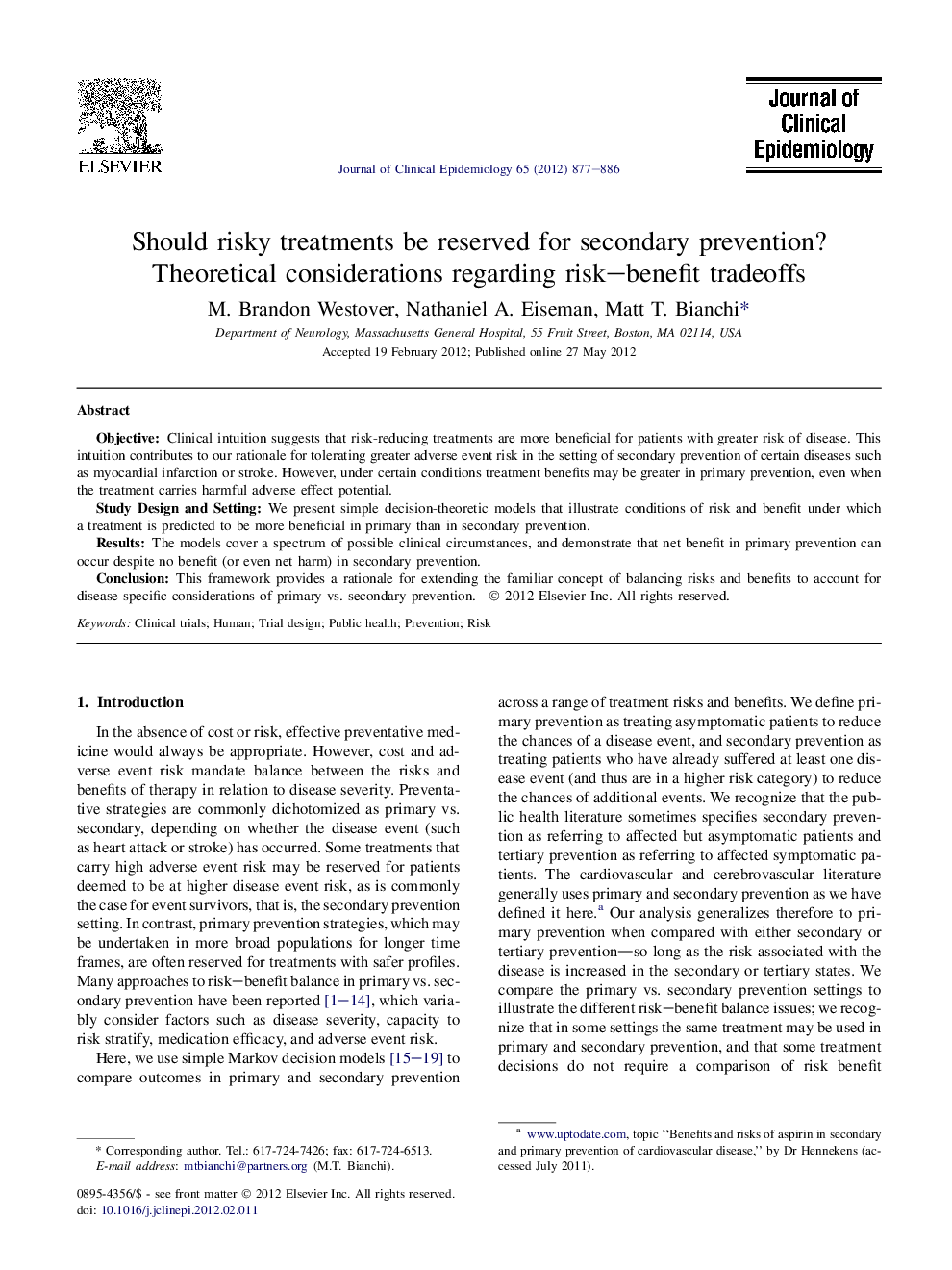| Article ID | Journal | Published Year | Pages | File Type |
|---|---|---|---|---|
| 1082401 | Journal of Clinical Epidemiology | 2012 | 10 Pages |
ObjectiveClinical intuition suggests that risk-reducing treatments are more beneficial for patients with greater risk of disease. This intuition contributes to our rationale for tolerating greater adverse event risk in the setting of secondary prevention of certain diseases such as myocardial infarction or stroke. However, under certain conditions treatment benefits may be greater in primary prevention, even when the treatment carries harmful adverse effect potential.Study Design and SettingWe present simple decision-theoretic models that illustrate conditions of risk and benefit under which a treatment is predicted to be more beneficial in primary than in secondary prevention.ResultsThe models cover a spectrum of possible clinical circumstances, and demonstrate that net benefit in primary prevention can occur despite no benefit (or even net harm) in secondary prevention.ConclusionThis framework provides a rationale for extending the familiar concept of balancing risks and benefits to account for disease-specific considerations of primary vs. secondary prevention.
